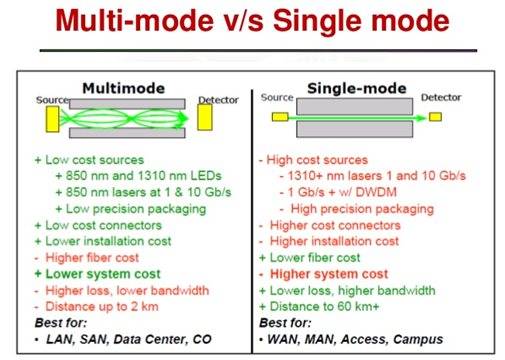- Related articles
- Optical Transceivers for Cisco WS-C2960+48TC-S Switch
- All Cisco CWDM-SFP10G-1610's information (List price, Specs, Datasheet PDF, Compatibility
- Optical Transceivers for Cisco SG350XG-2F10-K9-EU Switch
- Cisco S-Class Optics vs. Non-S-Class Optics
- How to Remove PCIE Slot Cover?
- Optical Transceivers for Cisco WS-C3650-24TD-E Switch
- All Cisco MGBLH1's information (List price, Specs, Datasheet PDF, Compatibility matrix)
- All Cisco ONS-XC-10G-I2's information (List price, Specs, Datasheet PDF, Compatibility mat
- The Difference between Internal Network Card and USB Wi-Fi
- Difference between GLC-LH-SM and GLC-LH-SMD

Definition
An optical fiber (or optical fiber) is a flexible, transparent fiber made by drawing glass (silica) or plastic to a diameter slightly thicker than that of a human hair. Optical fibers are used most often as a means to transmit light between the two ends of the fiber and find wide usage in fiber-optic communications, where they permit transmission over longer distances and at higher bandwidths (data rates) than wire cables.
Single mode and Multi mode optical fiber
Single mode Fiber
Single Mode cable is a single stand of glass fiber with a diameter of 8.3 to 10 microns that has one mode of transmission. Single Mode Fiber with a relatively narrow diameter, through which only one mode will propagate typically 1310 or 1550nm. Carries higher bandwidth than multi mode fiber, but requires a light source with a narrow spectral width. Synonyms are mono-mode optical fiber, single-mode fiber, single-mode optical waveguide, uni-mode fiber.
Multi mode Fiber
Multi mode fiber has a relatively large light carrying core, usually 62.5 microns or larger in diameter. It is usually used for short distance transmissions with LED based fiber optic equipment. Single mode fiber has a small light carrying the core of 8 to 10 microns in diameter. It is normally used for long-distance transmissions with laser diode based fiber optic transmission equipment.
Applications
Optical fiber is used by many telecommunications companies to transmit telephone signals, Internet communication, and cable television signals. Due to much lower attenuation and interference, the optical fiber has large advantages over existing copper wire in long-distance and high-demand applications.
Advantages of multi mode fiber and single mode fiber
This depends on the application. Multi mode fiber will allow transmission distances of up to about 10 miles and will allow the use of relatively inexpensive fiber optic transmitters and receivers. There will be bandwidth limitations of a few hundred MHz per Km of length. Consequently, a 10-mile link will be limited to about 10 to 30 MHz for CCTV this will be fine but for high-speed data transmission, it may not be.
Single mode fiber, on the other hand, will be useful for distances well in excess of 10 miles but will require the use of single mode transmitters. The higher cost of these optical emitters means that single-mode equipment can be anywhere from 2 to 4 times as expensive as multi mode equipment.
Conclusion
Fiber optic transmission has found a vast array of applications in computer systems. Some design considerations depend largely on the application. By contrast, connector loss becomes important in local area networks that operate within buildings. In other systems, it is important to minimize the cost of cable, with the intention of reducing the cost of terminal equipment. These system considerations make design and construction of practical fiber optic systems a difficult task. Guidelines appropriate for one system are usually not suitable for another system.






















































